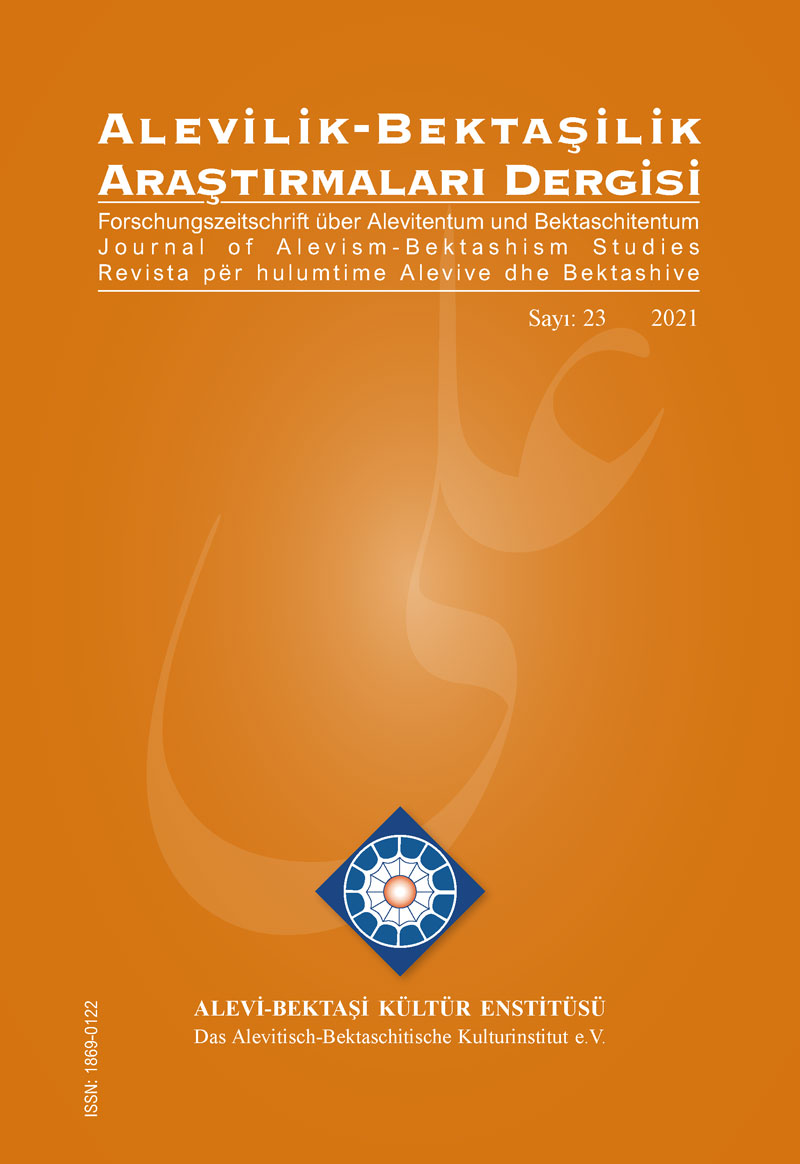The Forty Angels of Ana Buyere - Birth, Death and Immortality in the Cosmology of Alevis from Dersim
DOI:
https://doi.org/10.24082/2021.abked.313Keywords:
Being and becoming, the self as a multitude, angels of birth, the forty, sacred lakes, embodiment, phenomenologyAbstract
The idea of the existence of angels accompanying human in its life stages is found in monotheistic, dualist and polytheistic religions. In the birth event, the most important threshold of life, the functions of birth angels to inscribe the fate of the baby on the body are stated in written form in the Torah and the Qur’an. This idea is also present in the oral narratives of Anatolia, remembered especially by women. These written and oral narratives contain a society’s responses to the uniqueness of a person, the potentialities he/she contains, the forces that affect the formation of his/her place and path in the world. Although birth angels in different belief systems, mentioned in this paper, differ in number and quality, their common point is that they deliver essences flowing from another universe to this World, deposit them into the human body and trust them to the newborn. The narrative of forty angels, which bring the essences that will manifest themselves as the baby’s virtues, pass into the human world with the baby’s soul and body for forty days when “the gate” opens and help mother during birth, have been detected in different regions of Anatolia, such as Sivas, Erzincan, Eskisehir, Hakkari, Bolu. Even though the belief of forty angels is known in all local cultures of Anatolia, only in the cosmology of the Alevis from Dersim (Tunceli) is linked to a natural geographic formation, a glacial lake Ana Buyere in Pülümür.
The relationship between a glacial lake on a high mountain peak fed by rains and groundwater, and the essences which compose a human, will be analysed by focusing on the propositions it implies regarding the flows between humans, the underground world and the world above ground. The perception of a body as an ecosystem, where different elements must support each other in harmony, is analysed semiotically. How does it establish the borders of the human self that are permeable to other people and non-human beings, which are even sometimes lifted? What does the description of a lake in the wild as the home of angels bearing the essences of humans imply? Does the idea of essences thought to come from the afterlife, such as faith, impression, fam (understanding), offer a different proposition from the narrative of monotheistic religions about where human consciousness and understanding come from?
According to the argument of this study, the narratives of Çewres Hure Ana Buyere (forty angels of Ana Buyere) have a genealogy from the Demeter cult of Anatolia and Mesopotamia to the Hittite water cults. In addition, establishing the unity of the forties, which forms the backbone of the Qizilbash belief; the narratives about the process of harmonious integration of all the essences of human, which is thought to contain the whole universe, explain the immortalization process of the sacred “innocent shepherds” such as Düzgün Baba and Munzur Baba, fundamental cornerstones of Dersim culture. The narratives also explain how, by getting rid of the boundaries of the human body, they could become one with a mountain and a river. In the narrative of forty angels, the self-discovery of the individual and the continuous transformation of the essences that make up the universe are gathered in the same experience. The narratives describe functioning mechanism of the dynamic relationship between the whole and the parts. They also explain how social structures guide each human life on the pathway that goes beyond a single bodily existence, to physical and spiritual immortality. Oral narratives, which are the basis of the study, were compiled through face-to-face, semi-structured interviews in Dersim region between 2012-2017.








